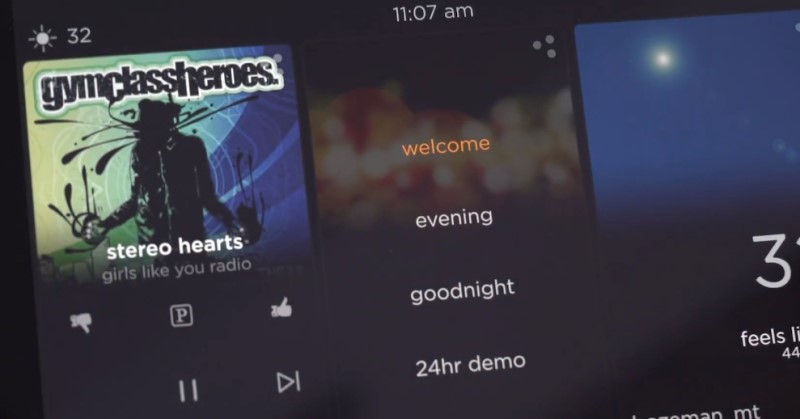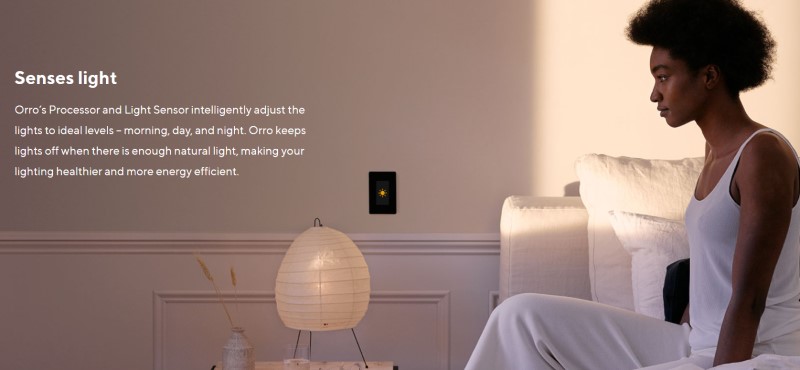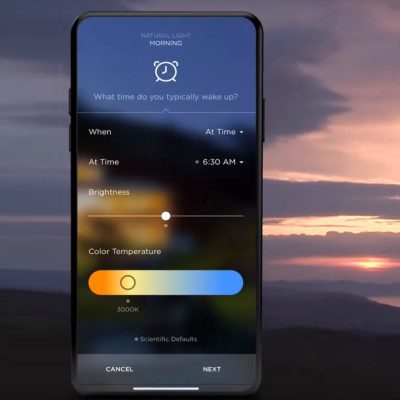For all the talk about circadian lighting, you’d think we’d have some … circadian lighting by now – you know, the kind that automatically synchs with the time of day in a given geography without human intervention. Sure, it might be all the rage in commercial environments, but residential is a whole different animal.
Commercial environments are pretty much one-note: Everyone in the space kind of does the same thing every day with little variability.
“It’s easy to do on a regular schedule for a full day,” says Angie Larson, VP of sales operations for Savant, the lighting, home automation and A/V manufacturer. “But it’s harder to do in the home, because someone is always interrupting the flow.”
You wouldn’t want all loads in all rooms to follow natural daylight patterns all the time. In the kitchen, you might want it brighter for cooking at certain times. Lighting schedules will be different in the parents’ rooms compared to the kids’. The home office? That’s another big question mark.
“That’s what’s going to hit the residential space,” Larson says. “How do you really deal with a true lifestyle?”
For its part, Savant is building flexibility into its human-centric lighting solutions. At Lightfair 2019 – the first year Savant had its own booth – the company showed a new “wellness schedule that can be completely personalized,” says Larson. “You can set specific schedules for specific rooms – basically everything you want to be affected.”
Also, with the Savant Pro app, users can now build color temperature into any scene, both scheduled and user-activated. Or, for a more seamless daylight experience, simply press a button on a keypad or app to turn on lights to the “correct” setting, based on geography, astronomical clock and other parameters built into Savant’s new software.
Savant offers an “end-to-end lighting experience” optimized for USAI Lighting fixtures, Savant Smart Bulbs and DMX Light Strips.
“By tightly integrating our wellness experience into the scene engine in the Savant Pro app,” Larson says, “we can tie in shades, climate and other environmental controls.”
Learn more about Savant's progress in circadian lighting at CEDIA Expo 2019.
Other Circadian Solutions
It’s tough to nail “circadian” lighting because of the multiple elements involved. Some solutions claiming to simulate natural daylight only tackle the spectral output or color temperature, not the intensity (brightness) of light. Others only tackle the brightness, essentially dimming the lights on a circadian schedule without any color-tuning.
That's not to suggest that these single-purpose solutions lack merit. They are shown to provide many of the same wellness benefits as more integrated solutions.
In any case, here are a handful of companies that are working on fixtures, algorithms and automation to simulate natural daylight.
After Lutron acquired Ketra in 2018, the two companies worked together to meld Lutron reliability with Ketra’s circadian smarts. Ketra is now part of Lutron’s HomeWorks family, and the system can produce automated lighting that “precisely mimics the color temperature and intensity of natural light, dynamically and imperceptibly shifting throughout the day,” according to Ketra. “Bright light energizes you in the morning, and warm light calms you in the evening.” [exhibiting at cedia expo 2019]
As with Ketra, Legrand and its associated lighting and automation brands can be set to simulate natural daylight from dusk to dawn. Legrand launched the Wattstopper Human Centric Lighting line in 2017, promising to reduce the complexity of designing, installing and operating tunable LED lighting systems.
Wattstopper and partners provide the circadian intelligence to “replicate the visual comfort of natural light,” while Vantage offers smart-home personalization tools. Press the “Welcome” button to recall the “correct” lighting settings for a particular time and geography. [exhibiting at cedia expo 2019]

Delos provides the algorithms for tuning fixtures to the perfect intensity and color temperature, allowing third-party lighting partners to match indoor environments with natural daylight conditions for any given time and place. Last year the company, which is behind the WELL Building standard, introduced the Darwin Home Wellness Intelligence platform to the smart-home channel. Darwin integrates with third-party lighting, indoor-air quality and other technologies to create an ecosystem with wellness in mind. [exhibiting at cedia expo 2019]
Here’s another fixture manufacturer that claims to perfectly simulate “healthy daylight and warm night light automatically … to entrain the brain to release the appropriate hormones at the appropriate time to create a healthy circadian rhythm all based on the spectrum of light delivered.”
The company might indeed have “studied years of recent brain science” to develop its LED lighting system, but Walalight errs in its claim to be “the only company that based their lighting products on brain science first.”
Focusing on the healthcare market, Chromaviso provides a full suite of solutions for optimizing light intensity and color temperature to improve comfort, alertness, moods, sleepfulness and other human conditions according to the needs of various occupants — patients, surgeons, night-shift nurses. The company has a wealth of research and case studies demonstrating how its “holistic 24-hour rhythm light” solutions produce “documented [positive] effects on depression, fatigue and circadian rhythm.”
Rivaling Walalight’s claims, BIOS says its SkyBlue lighting, which mimics the blue-sky wavelength of the sun’s light, is “the only circadian lighting solution designed from human biology to provide the specific light that our bodies actually need.”
Newcomer Orro by Edison Labs Inc. provides smart switches that dim or brighten lighting loads according to the time of day for any given geographical location. If users don't want to abide by the built-in circadian algorithms, they can override them in the system, or simply allow the system to learn their behaviors and adjust the patterns over time. [exhibiting at cedia expo 2019]

From a pioneer in circadian lighting, Lighting Science Group, Healthe seems to have the algorithms to drive its newish SunTrac A19, but the bulb doesn’t exactly go from dawn to dusk with the flick of a virtual switch. Instead (with a companion SunLync GPS device) it tracks the sun’s position and automatically adjusts spectral output between three settings – transitioning “imperceptibly” throughout the day, according to the company.








